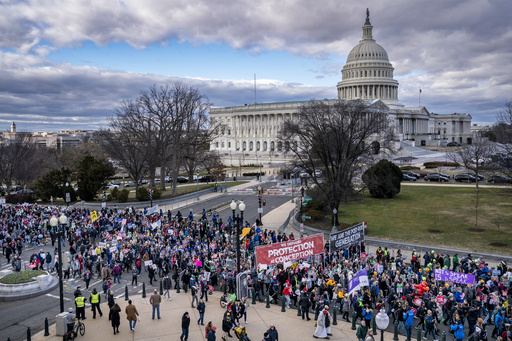The U.S. abortion funding landscape has been significantly altered three years following the Supreme Court’s decision to overturn Roe v. Wade, permitting states to impose bans. Initially, there was a surge in donations, but this influx has dwindled, resulting in the closure of numerous clinics. Advocates express concern that potential changes in federal policy could lead to further shutdowns.
Ramsie Monk from the Women’s Health Centers of West Virginia and Maryland notes the collective struggle within the sector, underscoring the challenges brought about by such changes. Meanwhile, Mercedes Sanchez of Cedar River Clinics in Washington contemplates the sustainability of the current model, emphasizing the commitment to maintaining access despite mounting difficulties.
State bans have complicated access to abortion, necessitating travel, which incurs additional expenses. Although medication-based abortions, often facilitated through telehealth, offer some reprieve, they are not universally applicable. Moreover, legal intricacies surrounding these prescriptions further complicate the situation.
Abortion funding does not align with traditional healthcare funding protocols. Many private insurance plans exclude abortion coverage, federal funds are prohibited from being utilized, and state Medicaid coverage is inconsistent across the country. This gap is partially addressed by a network of private funding, aimed at assisting with procedures, travel, and associated costs. Yet, following the 2022 Supreme Court ruling, subsequent financial support has not matched the ongoing demand surge.
States enforcing bans at all pregnancy stages, along with others implementing six-week gestation bans, have increased travel for abortion services. These trips impose costs that include transportation, lodging, and childcare, in addition to clinic fees. The National Abortion Federation, to accommodate increased demand, has reduced its financial coverage for clinics from 50% to 30%, highlighting that average travel expenses now exceed $1,000 per person.
Abortion funds now face the dual burden of increased expenses and logistical complexities. Pre-ban, organizations like Fund Texas Choice received fewer calls, but numbers have since skyrocketed, necessitating more intricate support like arranging flights and accommodations rather than basic transport logistics.
Some patients rely on the financial assistance of multiple organizations, weaving together funds from various sources to afford procedures. For instance, a patient was reported to have received aid from nine different groups, illustrating the complicated mosaic of support needed.
Despite some states still allowing abortions, clinics continue to shutter. Data from I Need An A shows 105 clinic closures post-Dobbs v. Jackson Women’s Health Organization ruling, with many occurring even in states without new bans. Nevertheless, 34 new clinics have emerged or relocated to pro-choice-friendly states.
Planned Parenthood has faced significant shifts, with closures across Iowa and Minnesota announced, while expanding services in other areas. This reorganization mirrors a reduction in abortions due to strict statewide laws and an overall decrease in their regional budget.
Facing political and budgetary challenges, the federal government has slashed funding for some health services, directly impacting groups that provide abortions among other health services. These cuts exacerbate the existing crisis within reproductive health care, leading to notable service deserts.
President Trump’s proposed tax and budget bill, currently proceeding through Congress, could further constrict abortion funding. It proposes a prohibition on federal insurance plans covering most abortions, and restricts Medicaid funds to Planned Parenthood. As a result, Planned Parenthood warns of potential closures affecting half of its abortion clinics, particularly in states permitting abortion.
Planned Parenthood’s leadership, represented by Alexis McGill-Johnson, highlights ongoing efforts to support health care access for low-income populations, noting that unresolved market deficiencies necessitate their existence.


